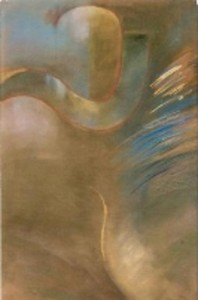Is a “Haiti Artist” work necessarily colorful?
The terms Haitian painters, Haitian paintings and Haitian art seem to conjure up scenes of lively and luxuriant jungles filled with their no less vocal inhabitants of all sorts, all generously drenched with the lavish colors of Haiti. That depiction of Haitian Art is only partly true. There is more to Haitian Painting.
A painter for more than 20 years, I have had time to experiment with many techniques and styles. My first oil painting ushering me in the Haitian Art world was a watery Haitian landscape executed in the impressionistic tradition of Haitian Painting. After working in that manner for a few years, a fellow Haitian painter, Simil, introduced me to the Haitian style known as École de la Beauté, characterized by the ever presence of beautiful women in various attractive environments. That style’s principal tenors at the time were “Haitian Art” heavyweights Simil himself, Bernard Séjourne and Jean-Réne Jerôme. I spent some time working in that fashion, trying to distance myself from the influence of those masters of “Haitian Art” while producing watercolor works, a couple of which I entered in a show at the Haitian Museum of Arts.
After a while, I tired of the École de la Beauté and started exploring Abstraction, which was a lot of fun.
Along the way, I took a Screen-printing course at the National Museum of Arts. That new skill broadened my understanding of the treatment of an art piece, since I could more easily think in terms of flat areas of paint as opposed to fancy brush work. That was the first time I really used bold pure colors, a clear separation from those grays so dear to most impressionists. Soon, while traveling in the States and Canada, I produced one single piece in the École de la Beauté style but with pure colors as my own contribution to that Haitian Art genre. Back to Haiti, I did not continue in that direction but went on with more grays and in pastels that I used in a very personal manner, quite differently from the traditional pastels techniques, reducing the sticks to a powder that I would mix much like paint before applying it to Crescent mat board. I was aiming for and reached an effect close to traditional lithography with a very flat look and very subtle grays.
At the same time, all around me, colors from the so-called Naive or Primitive Art were flying in the whirlwind kaleidoscope of Haitian paintings. But I did not feel like less of a Haiti Artist than my more exuberant fellow Haitian Painters, nor did I perceive my art less of a Haitian painting or Haitian Art than that produced by other Haitian painters. Recently, I decided to delve again into bold pure colors. However, I chose to somehow muffle their clamor by keeping rather reasonable and limited a palette. The result is a watermelon-like freshness, and a gentle, Caribbean feel. Examples include “The Green Vase”
See other pieces at the “Gallery” page.
Call: 857-251-1662


